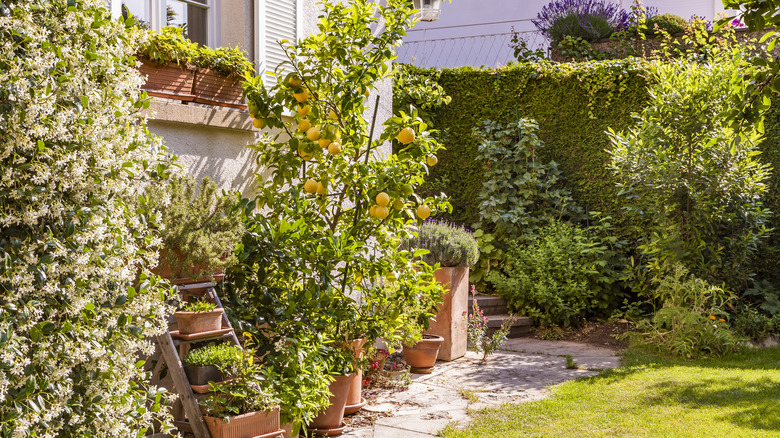Why Forgetting To Thin Out Your Citrus Tree's Fruit Could Result In Disappointment
Citrus trees are generous growers, often producing an abundance of fruit beyond what their young branches can handle. While it may seem like a good problem to have, failing to thin out excess fruit is a common mistake people make when growing fruit trees — one that often leads to disappointing results. Most citrus trees that come from the nursery are grafted. That means that they are made by splicing two different trees together: a rootstock and a scion (the portion of the tree that bears fruit). As a result, young citrus trees try with all their might to bear a heavy fruit load the way a fully mature tree would. However, without the vigorous root system of an older tree, they struggle under such a burden.
Overbearing can lead to several issues — small, underdeveloped fruit; branches breaking under excessive weight; and even an alternate bearing cycle, where the tree exhausts itself one season and produces little to no fruit the next. Additionally, unthinned fruit may not ripen properly, as the tree lacks the energy to bring all its fruit to maturity. This means that instead of a bountiful, high-quality harvest, you might end up with undersized fruits. Fortunately, if a tree's fruit is too heavy for its branches, remembering to remove some of the fruitlets will help the tree thrive and leave you with a better harvest.
When and how to thin your citrus tree
Fruit thinning is the process of selectively removing excess young fruit to improve the overall quality and stability of the tree. This is particularly important with young trees, which still are developing their root systems. The best time to start thinning is after the tree naturally experiences the dropping of fruit, which usually happens when the fruit reaches about the size of a marble. This timing allows the tree to focus on ripening a manageable number of fruits rather than exhausting itself.
When the time is right, remove the smallest (or deformed) fruits from the branches, leaving about 70% of the total to continue growing. Unless your citrus tree is tall and you can't safely reach all the fruits by hand, manual thinning is the way to go. Hold the fruit with two fingers and twist it off the branch. If you're working with a mature tree that's quite tall (for example, if you're growing lemon trees, which regularly reach heights exceeding 20 feet) try the pole method instead. Slide a short rubber hose over one end of a lengthy pole, then use this cushioned end to hit fruit clusters until some of the fruitlets drop.
